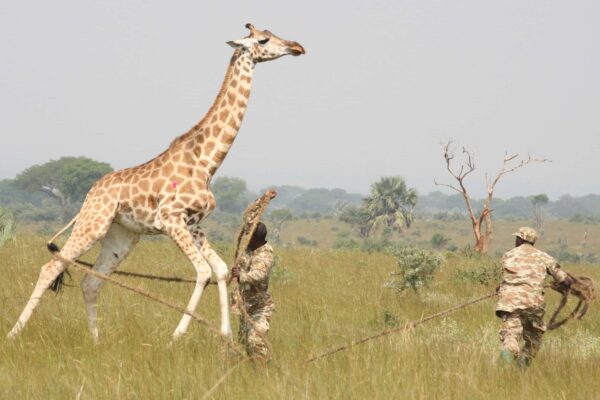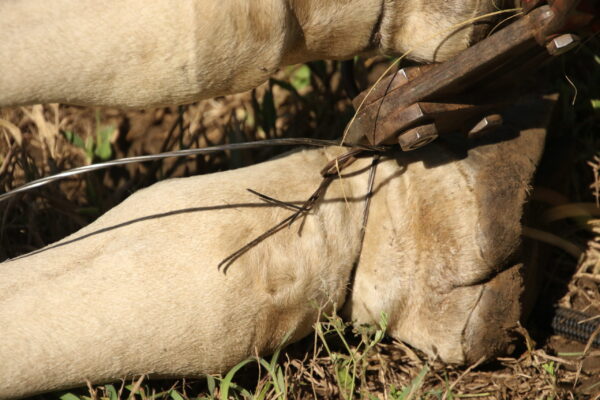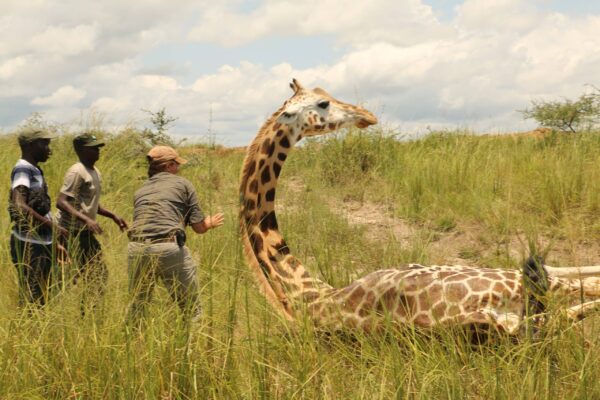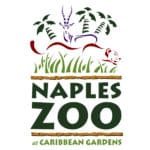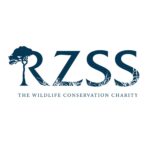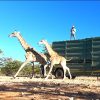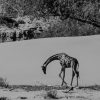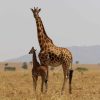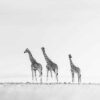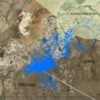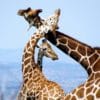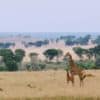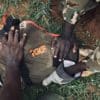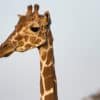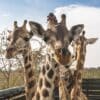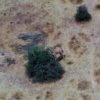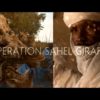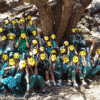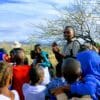As a science-based organisation, our programmes and initiatives throughout Africa aim to provide innovative and adaptive approaches to giraffe conservation management while working with government agencies and a wide range of partners on the ground and internationally to secure a future for giraffe.
Through our Giraffe Conservation Health initiative, we are tackling these priorities from a veterinary science and conservation medicine perspective.
This initiative incorporates a wide range of aspects, such as evaluating the best immobilisation practices for giraffe, enhancing capacity building of the next generation of Africa’s wildlife veterinarians, assisting in the development of new technology for satellite tracking, best-practice methods for conservation translocations, and researching disease threats and health issues in wild giraffe populations.
Immobilising giraffe is a challenging task that many wildlife veterinarians shy away from. While their long neck and graceful legs make them one of the most iconic animals in Africa, this unique anatomy and physiology requires a true mastery of wildlife capture and immobilisation.
Giraffe immobilisations are a critical part of many of our programmes and initiatives, such as our Twiga Tracker initiative, where we learn so much more about giraffe movements and habitat use; conservation translocations (Operation Twiga), which have already expanded the giraffe range in Africa by over 11 million acres; and for the quick and effective treatment given to snared giraffe, which truly helps saving different species of giraffe in the wild.
Giraffe mortality rates from anaesthetic procedures historically have been high with some countries reporting up to 50% but generally 10%. However, with constant scientific analysis of current immobilisation practices and advanced training, this risk can be significantly reduced and brought close to zero. Working together with the foremost wildlife veterinarians and wildlife capture teams in Africa, it is our goal to further develop best practice guidelines and equip wildlife veterinary and capture teams with experience and knowledge to ensure the safety of wild giraffe.
Building the capacity of local Africans is at the core of our work throughout the continent. GCF has been instrumental in providing capacity building during our in-country projects as well as supporting African veterinarians to receive additional training in targeted wildlife medicine, game capture courses and exchange visits over the past decade. As wildlife conservation initiatives become more important in many African countries, there is a distinct need to invest more in local African wildlife veterinarians and their training. GCF, in partnership with the University of Namibia’s School of Veterinary Medicine, offers a hands-on practical wildlife immobilisation course designed to fit the needs of young African wildlife veterinarians. The course aims to increase the confidence and ability of African wildlife veterinarians under the tutelage of experienced experts in the field, while at the same time building leadership skills and developing a valuable network of peers. After two successful years of implementation, this unique and dynamic course has proven very successful and so far trained 16 veterinarians from 10 different African countries.
Relatively little is known about diseases that affect giraffe in the wild or which diseases or medical conditions are of concern to their survival. GCF is committed to exploring and evaluating ways in which these knowledge gaps can be addressed. We continually collect data, analyse samples, conduct literature reviews, and discuss current issues in giraffe health with other experts in the field to address potential disease concerns collaboratively and actively as/when they arise.
Snaring and injury through illegal wire snare traps pose a significant threat to wild giraffe in some key populations in Africa. While illegal wire snare traps are generally set for small to medium sized antelope and not for giraffe, the indiscriminate nature of these snares ensures all species are under threat of injury or death. Giraffe caught in such snares are often strong enough to break free from the anchor point but can end up dragging the wires around for weeks or longer, causing severe wounds with infection, permanent limb deformities, and in extreme cases, amputation of limbs and ultimately death.
Illegal wire snares are a major threat to the Critically Endangered Nubian giraffe in Murchison Falls National Park, Uganda. GCF has long collaborated with the Ugandan Wildlife Authority (UWA) on Nubian giraffe conservation in the country, which has included providing support to the mobile veterinary unit to patrol for and immediately treat giraffe (and other wildlife) entangled in wire snares. This support, both in funding, training and provision of veterinary equipment and drugs has resulted in some amazing conservation success stories. So far the team has desnared almost 600 animals including over 380 Nubian giraffe, which means that they have rescued over 13% of the world’s Nubian giraffe population.
Through GCF’s Conservation Health initiative we are establishing an Africa-wide network of experienced wildlife veterinary professionals who are excited to work collaboratively and continue to enhance giraffe conservation throughout the continent.

